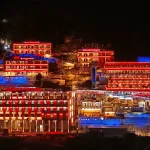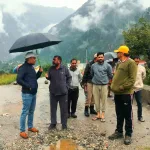The word Television combines “Tele” meaning “far off” and “Vision” meaning “something seen in imagination”. Television is one of the greatest inventions of mankind. Since the invention of first ever electronic television in 1927, the television has undergone a number of changes in shape and size as well as in terms of transmission technology and picture quality. Today, the sleek, wall mounted televisions of different sizes are found in billions of houses across the world. They come in different sizes and are also equipped with latest technology, capable of showing hundreds of channels. Television is a symbol of communication and globalization that educates, informs, entertains and influences our decisions and opinions. In 1996, the United Nations general assembly declared November 21 as World Television Day. The UN recognized television as having an increased impact on decision making as well as being an ambassador for the entertainment industry.
The evolution of television has been a steady process, however, there have been definitive moments that have changed technology forever. The word “television” first appeared in 1907 in the discussion of a theoretical device that transported images across telegraph or telephone wires. The first device we could call a “television system” was created by John Logie Baird, a Scottish engineer. His mechanical television used a spinning “Nipkow disk,” a mechanical device to capture images and convert them to electrical signals. These signals, sent by radio waves, were picked up by a receiving device. Its own disks would spin similarly, illuminated by a neon light to produce a replica of the original images. Baird’s first public demonstration of his mechanical television system was somewhat prophetically held at a London Department store way back in 1925. The evolution of the mechanical television system progressed rapidly and, within three years, Baird’s invention was able to broadcast from London to New York. By 1928, the world’s first television station opened under the name W2XCW. It transmitted 24 vertical lines at 20 frames a second.
Of course, the first device that we today would recognize as television involved the use of Cathode Ray Tubes (CRTs). These convex glass-in-box devices shared images captured live on camera, and the resolution was, for its time, incredible. This modern, electronic television father was Philo Farnsworth and he knew very little about electronic theory. Despite family hardships, Philo was determined to go to college and managed to be admitted to Brigham Young University. In his spare time he learned about vacuum tubes and cathode ray tubes, but without money he had no hope of building a working model of his television idea. One night in the dead of winter Philo read an article about the possibility of combining radio and motion pictures and transmitting this new media instantly into homes just as radio was now doing. His television receiver was built from a chemistry flask. This became the picture tube which Phil called the “Image Oscillite. It took months of building their television system before they could even test it. The first tests showed only a glow when current flowed through the receiver. It took several more months of redesign work, but then on September 7, 1927 he was successful. Phil’s television laboratory needed equipment that would have to be invented and he needed people. One of the first was his old friend and brother-in-law Cliff Gardiner who was quickly named the chief glass blower. Like Phil, Cliff had only a high school diploma and no knowledge of glassblowing. But on January 7, 1927 Phil applied for his first patent. This is considered the official date of the invention of television. On Sept. 3, 1928, The San Francisco Chronicle described Phil’s television as a “queer looking line image in a bluish light which smudges and blurs frequently, but the basic principle is achieved and perfection is now a matter of engineering.” Philo T. Farnsworth died in 1971.
In the summer of 1935, the first public demonstration of television took place at the Franklin Institute in Philadelphia. Farnsworth was given funds to build a brand new system for the Institute. People lined up for blocks to see this new wonder. One camera was placed near the door. When people entered, they saw themselves on the nearby “receiver,” the bottom of a ten gallon jug. Phil Farnsworth was invited to speak to the F.C.C.. He welcomed this because he felt he had always been well-treated by the F.C.C. This time the commissioners wanted his opinions on the future of this new industry – television. The Farnsworths moved to Indiana, the site of their new plant. Phil was named vice president and director of research. He became involved in engineering the assembly line operation and product design. Phil stayed with ITT in Fort Wayne until 1967. Then he retired and moved back to Salt Lake City. As he saw what television had become he wondered if all his work had been worth it. Then in 1969 he and Pem watched a man walked on the moon and he knew his work had been worthwhile.
On November 21 and 22 in 1996, the United Nations held the first World Television Forum. Here, leading media figures met to discuss the growing significance of television in the rapidly changing world and consider how they might enhance their mutual cooperation. UN leaders recognized that television could bring attention to conflicts, raise awareness of threats to peace and security, and sharpen focus on social and economic issues. Television was acknowledged as a major tool in informing, channeling, and affecting public opinion, having an undoubtable presence and influence on world politics. Because of this event, the UN General Assembly decided to name November 21 World Television Day, not to celebrate the object itself, but the symbol for communication and globalization in the contemporary world that it represents. Prior to this people received information via radio broadcasting, if a household was equipped with a transistor radio, and the newspapers. Early television broadcasts followed the same format as radio, with a man reading a simple bulletin on a black and white screen. The technology however soon evolved to include images of events and interviews with people. The monochrome style was abandoned when color technology was developed in the mid to late sixties, and TV technology continues to advance with evermore sophisticated optics and digital enhancements.
Today television has evolved so much that it has fundamentally transformed everyone’s lives. It has become an important part of our daily life and inescapable part of modern culture. We depend on TV for entertainment, news, education, culture, weather, sports—and even music, since the advent of music videos. It is the most wonderful invention of mankind and is a blessing in disguise. One can hear as well as watch the live programmes taking place at far off places. Gathering around the television gives families, friends, and strangers something to bond over. Television also continues to benefit the masses by making them conscious of the environment, rights, duties and privilege. It is a source of teaching etiquettes, language skills, hobbies, social relations and religious believes.
(The Author is a regular writer for this newspaper and can be reached at [email protected]





